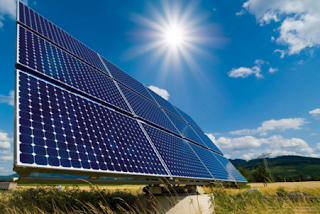The solar panel, which can get that kind of energy is a kind of sticker, which is quite flexible and thin, so there is the possibility of its application to the windows of skyscrapers, or the surface of the aircraft, such batteries can be easily applied to a variety of surfaces.
The scientific team led by Xiaolin Zheng in the walls of the University of Stanford was able to develop a unique solar panels. They make these batteries in the form of a self-adhesive film which can be easily applied on different kinds of surfaces.
It Xiaolin Zheng's father led him to the idea that once remarked that it would be good to hide the solar panels is not only the surface of the roof, but the whole building is completely (there are a large number of panels in Chinese buildings on the roof). Zheng in 2010, was able to get acquainted with this article, which tells about a rather interesting experiment. The whole point of this experiment is immersed in a nickel water, with graphene, where grown (it is a nanomaterial, which is formed by a layer of carbon atoms and has a thickness one atom).
Located on the nickel and the silicon wafer was separated from the water from its surface with graphene. And this is what forms the basis of what has been created, thanks to the ultra-flexible solar panel (which draws energy from any surface). Speaking of the standard solar panel, they are made on glass or silicon wafers. Therefore, we can say that they are quite heavy. So, we have a very limited space of this kind of application panels. You can also add that the flexibility given panel is plastic and paper, but they do not have sufficient strength. As a basis, Zheng gave a proposal to use the same glass or silicon surface, except that you need to lay a layer of metal between the panel and the base. After soaking in water, the resulting "cake of leaves" (within seconds) is separated from the surface of the metal layer. What can we say about the result, the working solar panel thickness of only a few microns. Now, thanks to such a thickness and high flexibility can be placed on any surface of the resulting material and even on a mobile device (i.e., any surface can receive solar energy).
Well, at the expense of the amount of energy produced, ultra-thin panel Zheng produce this energy in the same exact number, how many of them quite bulky and hard "counterparts." However, the presence in the production is a tremendous savings and less time-consuming installation. Also, the advantages include the fact that you can reuse silicon wafers because after they are completely clean.










0 comments:
Post a Comment